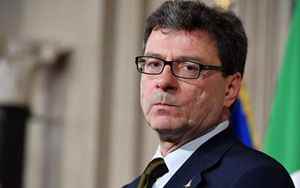(Tiper Stock Exchange) – The debate on the ESM is back in the newsSince Italy is the only country that has not yet ratified it, after Germany ratified following the German High Court’s favorable ruling. To clarify it too ECB President, Christine Lagardewhich hoped for a speedy approval from Italy.
The ESM or European Stability Mechanismknown colloquially as the State Bailout Fund, is one instrument born in 2012, in the aftermath of the economic and financial crisis of 2008-2009. It was in full swing at the time sovereign debt crisis, speculation raged on the countries with the highest debt. The triad formed by Mario Monti, Angela Merkel and Nicholas Sarkozy therefore decided to launch one tool to rush to the rescue of a member state in difficulty, but only under certain conditions and behind precise commitments (the famous conditionalities).
The conditionality they generally consisted of a macroeconomic and public finance adjustment plan, more stringent for countries with some imbalances such as Greece, less invasive in the case of countries in fundamentally sound economic-financial conditions affected by sudden shocks due to speculation. The Board of Governors, made up of the 19 finance ministers of the euro area, decides on aid and recovery plans.
The ESM was born with one endowment of over 700 billion euros, paid up to now for 80 billion about. Italy has formed subscription commitments for 125 billion and has so far paid 14 billion.
The famous “reform” of the ESM sanctions the breach of conditionalities and recovery plans and a intervention of the ESM as a “backstop” of the Single Resolution Fund for banking crises. Naturally, even in this case, there is a certain margin of discretion in conducting checks on the country requesting financial assistance.
In time of pandemic, a new use of the ESM in the health fieldfor the expenses necessary to finance the healthcare system and, in this case, the only conditionality would be the use of the funds for the expenses of the healthcare system.
The Italian government has not yet ordered ratification of the reform of the ESM and announced that there should be a broad and adequate debate in Parliament on this point. Having said that, the Minister of Economy Giancarlo Giorgetti has already aired the possibility of modifying the text of the reform, negotiated and approved by the Conte government, to transform the ESM from an instrument against debt and financial crises to an instrument of protection against external shocks such as the energy crisis and the war in Ukraine and, in non-emergency times, to be used as a driving force for investment
The biggest problem would be the need for the EU to start from scratchradically revise the text of the reform, forcing even the states that ratified the first version to call everything into question again, with the consequent lengthening of the times for the finalization of the procedure. Not an easy decision for the Government, which has always opposed an instrument which, at least in the way it has been applied to Greece, seems more like a commissioner than an aid.
